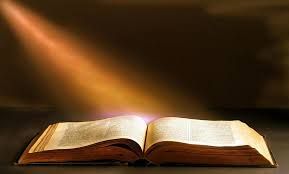
1st Advent Sunday Cycle C
The first Reading is from the Book of Jeremiah in the Jewish Bible which Christians call the Old Testament. However the passage ( chapter 33:14-16 ) is actually not found in the Greek version of the Bible (known as the Septuagint often written as LXX) which was probably based on an earlier edition of the Book of Jeremiah and it is mostly the same wording as Jeremiah 23:5f. Although Jeremiah operated in the 7th century BC, this bit was added in the following century when the Jews had practically lost their land to the Babylonians and needed an upbeat message of hope, grounded, as always, on the belief in the faithfulness of God to His original promises to them. They referred to this quality of God as His righteousness. So the message of the prophet was that there will be a king, a branch of this royal House of David, who will be righteous and who will rightly be called ‘the Lord is my integrity,’ words which in Hebrew are the name Zedekiah, the name of a king who “did evil in the sight of the Lord” (2 Kings 24:19ff).
The Second reading is part of Paul’s first letter to the Thessalonians ( chapter 3:12 to 4:2 ) after hearing from his friend Timothy that the Christians there were doing alright. He had established the church there particularly among the underprivileged, and it was they who smuggled him out hastily when the authorities became suspicious of his rapid and sizeable success. So with good news from Timothy he is able to write encouragingly to them. These early Christians were expecting the second coming of Christ at any moment and so this was both a reason for joy and for encouragement in good living according to the will and teachings of Jesus, which Paul had originally conveyed to them.
The gospel from which we generally read in this third year of the cycle of three (it is part of the Common Lectionary which many Christian denominations use) is from Luke. It is a passage ( chapter 21:25-36 passim
) which Luke has probably seen in Mark’s gospel; Mark was written earlier about the time of the destruction of the Temple in Jerusalem, an event which was quite a shattering catastrophe especially for the Jews and Jewish Christians but this disaster gave a newness of life to many Jewish believers. Two decades later, Luke still refers to disasters as a way to encourage the Christians, assuming they are faithful, to expect the Coming of Christ as a cosmically dramatic occasion. For people in those days, as for us today, the movement of the sun, the moon and the stars was quite predictable, unlike the weather and the political situation, and so the deviation of these from their normal paths was a good symbol for the remarkable future event of the coming of Christ in glory and the fulfilment of the kingdom of God.
Jeff Bagnall was a lecturer for many years at Craiglockhart College teaching RE to many future Catholic Primary teachers.